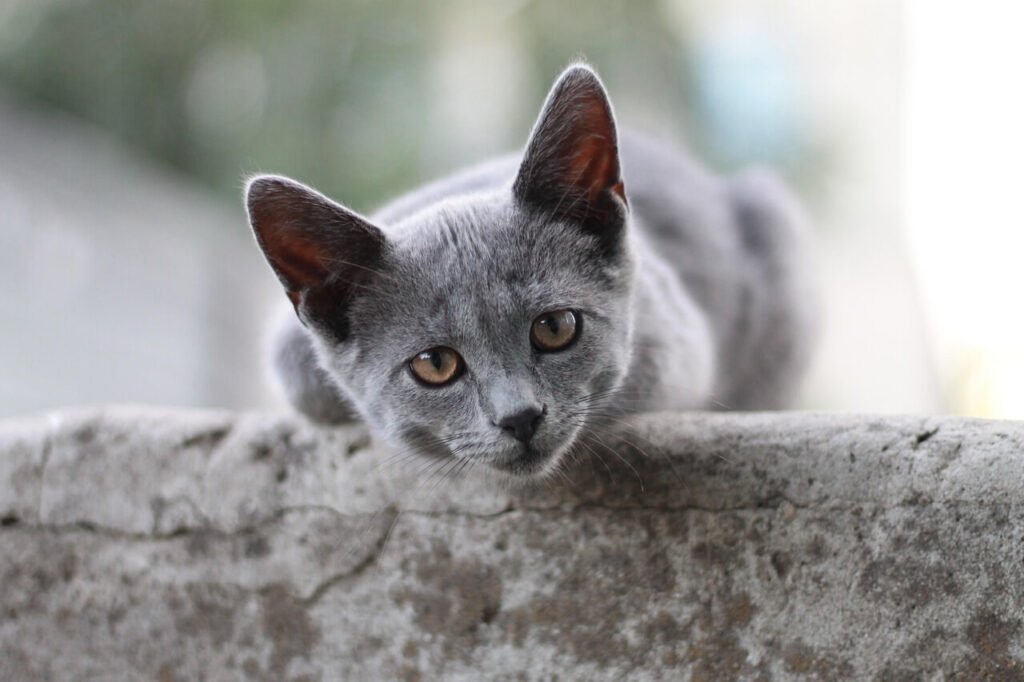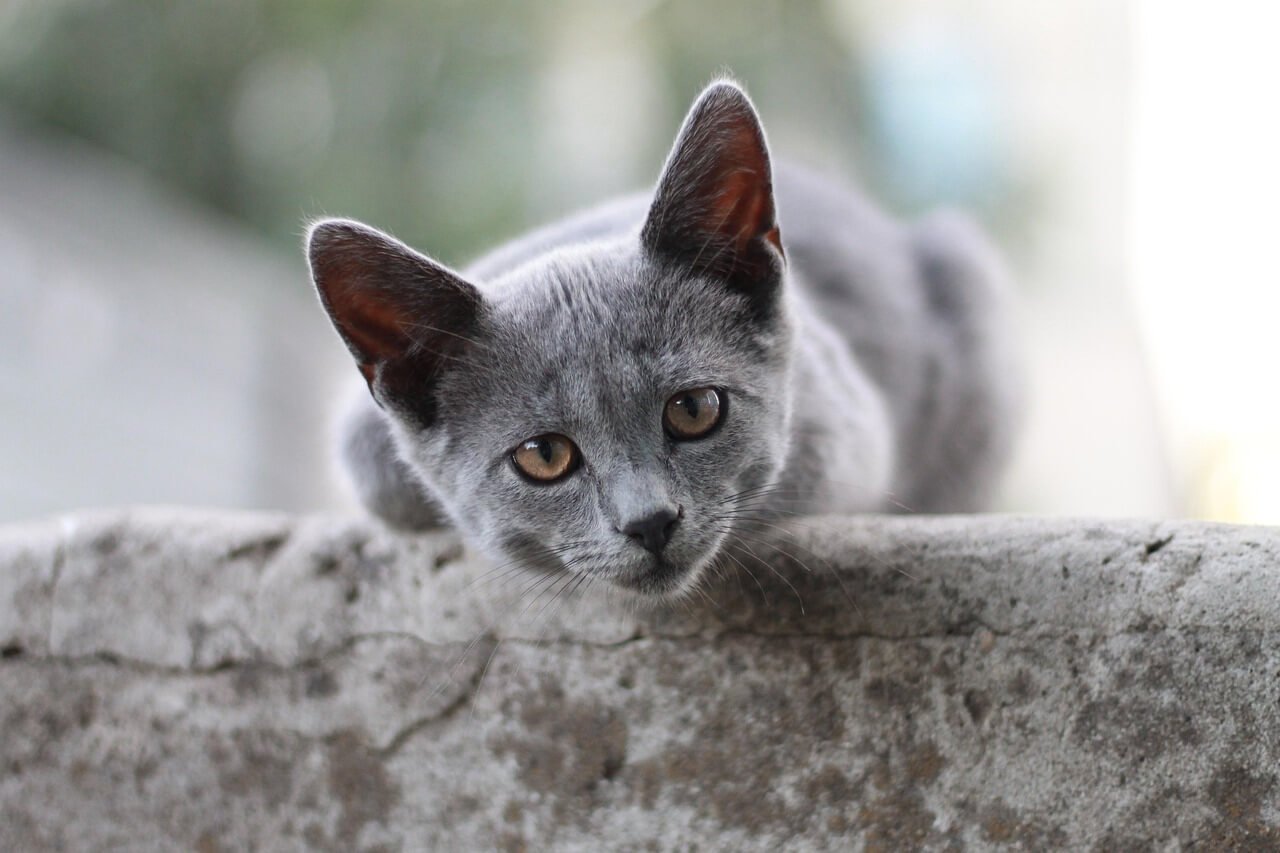What Does It Mean When a Cat Wags Its Tail?
Cats are fascinating creatures, and their body language often speaks volumes about their emotions and intentions. One of the most intriguing behaviors is when a cat wags or moves its tail. Unlike dogs, whose wagging tails typically signal happiness, a cat’s tail movements can convey a wide range of emotions—from contentment to frustration. Understanding what it means when a cat wags its tail can help you better interpret your feline friend’s mood and strengthen your bond. In this blog post, we’ll explore the nuances of cat tail language, decode the various types of tail movements, and provide tips for responding appropriately to your cat’s signals.
Common Types of Cat Tail Movements and Their Meanings
A cat’s tail is a powerful communication tool, and the way it moves can reveal a lot about how they’re feeling. Here are some common tail movements and what they might signify.
Slow, Gentle Swishing:
This subtle movement often indicates curiosity or mild interest in something nearby. Your cat may be observing or processing new information.Quick, Agitated Twitching:
A rapid, twitchy tail motion suggests irritation or annoyance. If your cat is displaying this behavior, it’s best to give them space.Puffed-Up Tail with Hair Standing On End:
When a cat’s tail puffs up, it’s a sign of fear or defensiveness. They’re trying to appear larger to ward off potential threats.Tail Held High with a Slight Curve at the Tip:
This is a classic “hello” gesture from your cat, signaling confidence and friendliness. It’s often accompanied by a happy meow.Low, Tucked Tail:
A tail tucked close to the body can indicate fear, submission, or discomfort. Your cat may be feeling insecure or threatened.
By paying attention to these tail movements, you can gain valuable insights into your cat’s emotional state and respond accordingly.

How Context Influences Tail Wagging
While tail movements provide clues about a cat’s mood, context plays a crucial role in interpreting their meaning. The same tail motion can have different implications depending on the situation.
During Playtime:
A flicking or wagging tail during play might indicate excitement or overstimulation. Watch for signs of escalating energy to avoid accidental scratches.When Meeting New People or Pets:
A swishing tail in this scenario could mean curiosity or apprehension. Observe other body language cues, such as ear position, to gauge their comfort level.Around Mealtime:
If your cat’s tail twitches while you’re preparing food, it could reflect anticipation or impatience. They’re likely eager for their meal.After Being Disturbed During Rest:
A flicking tail in this context might signal mild irritation. Your cat may not appreciate being interrupted.In Unfamiliar Environments:
A tense or twitching tail suggests uncertainty or stress. Give your cat time to adjust before engaging with them.
Understanding the context behind tail wagging helps you interpret your cat’s behavior more accurately and respond with empathy.
Check this guide 👉 Cat Stretching: Best 7 Tips to Understand Relaxation!
Check this guide 👉Why Is My Cat Crying? Best 7 Expert Tips!
Check this guide 👉 Why Cats Love to Lay Down: Best 7 Expert Tips!
Positive Tail Signals | Negative Tail Signals |
|---|---|
Tail held high with a slight curve | Puffed-up tail with hair standing on end |
Slow, gentle swishing | Quick, agitated twitching |
Tail wrapped around another pet or person | Low, tucked tail |
Relaxed, still tail | Vigorous back-and-forth wagging |
Flicking tail during play (moderate) | Tail lashing with flattened ears |
Tips for Responding to Your Cat’s Tail Language
Knowing how to react to your cat’s tail movements can improve communication and strengthen your relationship. Here are some practical tips for interpreting and responding to their cues.
Respect Their Space:
If your cat’s tail is twitching rapidly or puffed up, they may need time alone. Avoid approaching them until they’ve calmed down.Engage in Play:
A flicking tail during playtime can mean your cat is having fun but may become overstimulated. Offer breaks to prevent rough behavior.Observe Other Body Language Cues:
Combine tail movements with ear position, vocalizations, and posture for a fuller understanding of your cat’s mood.Offer Comfort in Stressful Situations:
If your cat’s tail is low or tucked, provide reassurance through soft words or gentle petting—if they seem receptive.Reward Positive Behavior:
When your cat greets you with a high, curved tail, reward them with affection or treats to reinforce their friendly demeanor.
Responding thoughtfully to your cat’s tail language fosters trust and enhances your connection with them.
Misinterpretations of Cat Tail Movements
It’s easy to misread a cat’s tail movements, especially if you’re unfamiliar with their unique communication style. Avoiding these common misconceptions ensures you interpret their signals correctly.
Assuming Tail Wagging Equals Happiness:
Unlike dogs, cats rarely wag their tails out of pure joy. More often, it signifies agitation or focus.Ignoring Subtle Movements:
Small flicks or slow swishes can carry significant meaning. Don’t overlook these quieter signals.Confusing Playfulness with Aggression:
A wagging tail during play doesn’t always mean aggression—it could simply reflect heightened excitement.Overlooking Contextual Clues:
Failing to consider the environment or situation can lead to incorrect interpretations of tail movements.Thinking All Cats Communicate the Same Way:
Each cat has unique habits and preferences. Pay attention to individual patterns rather than generalizing.
By avoiding these pitfalls, you can better understand and connect with your feline companion.
How to Build Trust Through Tail Communication
Understanding your cat’s tail movements can help build trust and create a harmonious relationship. Here are some ways to use tail language to foster connection.
Be Patient and Observant:
Take time to notice patterns in your cat’s tail movements and correlate them with specific situations. Patience builds mutual understanding.Avoid Forcing Interaction:
If your cat’s tail signals discomfort or fear, step back and let them approach you when they’re ready.Use Positive Reinforcement:
Reward calm and friendly tail gestures with treats or affection to encourage similar behavior in the future.Create a Safe Environment:
Ensure your home has spaces where your cat feels secure, reducing stress-related tail signals.Communicate Nonverbally:
Mimic relaxed body language, such as sitting calmly, to show your cat you’re not a threat.
Building trust through tail communication strengthens your bond and creates a peaceful coexistence.
Differences Between Cat and Dog Tail Language
While both cats and dogs use their tails to communicate, their messages differ significantly. Understanding these differences prevents confusion and misinterpretation.
Wagging vs. Swishing:
Dogs wag their tails to express happiness, whereas cats swish or wag their tails to show focus or agitation.Height Indicates Confidence:
Both species hold their tails high to signal confidence, but cats add a slight curve for added friendliness.Fear Responses Differ:
Cats puff up their tails when scared, while dogs tuck theirs between their legs.Playful Signals Vary:
A dog’s wagging tail during play is purely joyful, while a cat’s flicking tail may signal excitement mixed with caution.Context Matters More for Cats:
Cat tail language relies heavily on situational context, unlike dogs, whose signals are often more straightforward.
Recognizing these distinctions helps you decode your cat’s unique communication style accurately.
Fun Facts About Cat Tails
Cat tails are not only tools for communication but also fascinating parts of their anatomy. Here are some intriguing facts about feline tails.
Balance and Agility:
A cat’s tail acts as a counterbalance, helping them navigate narrow surfaces and perform impressive leaps.Expressing Emotions:
Cats have over a dozen distinct tail positions, each conveying a specific emotion or intention.Unique Tail Patterns:
Just like fingerprints, every cat’s tail markings are unique, making them identifiable even in multi-cat households.Tailless Breeds Exist:
Some breeds, like the Manx, are born without tails due to genetic mutations, yet they communicate effectively using other body language.Tails Reflect Health:
Changes in tail movement or posture can sometimes indicate underlying health issues, so monitor your cat closely.
These fun facts highlight the versatility and importance of your cat’s tail in their daily lives.
Frequently Asked Questions About Cat Tail Wagging
Why does my cat wag its tail when I pet them?
It could mean they’re enjoying the attention, but watch for signs of overstimulation, such as rapid flicking.
Is tail wagging always a bad sign?
Not at all! It depends on the context and accompanying body language.
Can kittens wag their tails differently than adult cats?
Yes, kittens may wag their tails during play or exploration, which differs from the more nuanced expressions of adult cats.
Should I stop interacting with my cat if they wag their tail aggressively?
Yes, giving them space prevents escalation and respects their boundaries.
How can I tell if my cat is happy or upset by their tail wagging?
Combine tail movements with other cues, such as purring (happy) or flattened ears (upset), to make an accurate assessment.
Decoding the Secrets of Your Cat’s Tail
A cat’s tail is far more than just an adorable appendage—it’s a dynamic tool for expressing emotions and communicating needs. By learning to interpret the subtle nuances of tail movements, you can better understand your cat’s feelings and respond with care and empathy. Whether it’s a slow swish of curiosity, a twitch of irritation, or a proud flick of confidence, each movement tells a story worth listening to. With patience and observation, you’ll unlock the secrets of your cat’s tail language and strengthen the unbreakable bond you share.
Understanding Cryptosporidium in Cats: Best 7 Expert Tips! – Spot symptoms, treat safely, and stop parasite spread in your home.
Understanding Cryptosporidium in Dogs: Best 7 Expert Tips! – Learn symptoms, treatment & prevention for this stubborn gut parasite.
Understanding Syringomyelia in Cats: Best 7 Expert Tips! – Recognize signs, manage pain, and support your cat’s neurological health with vet-backed guidance.
Understanding Syringomyelia in Dogs: Best 7 Expert Tips! – Expert insights on symptoms, MRI diagnosis, pain management & quality of life.





